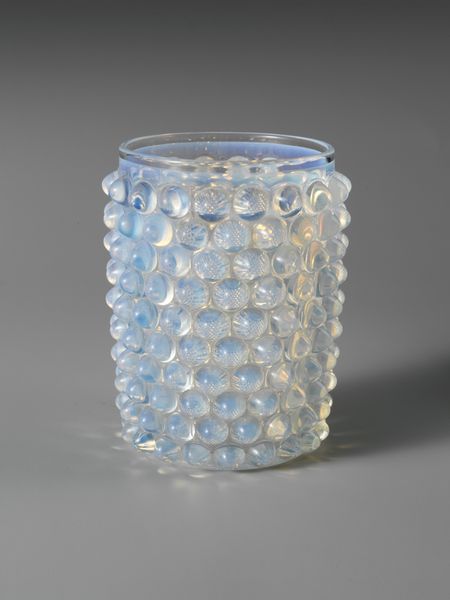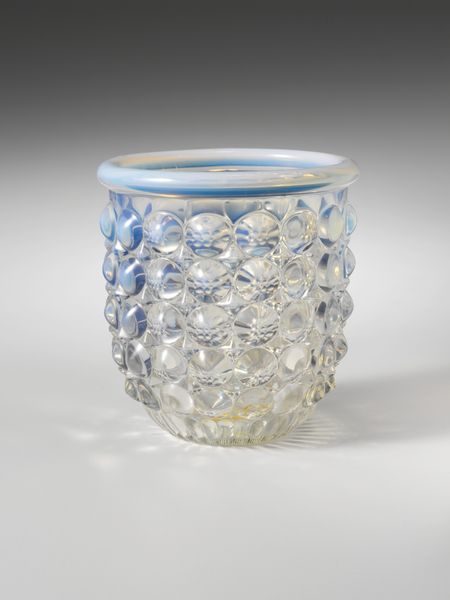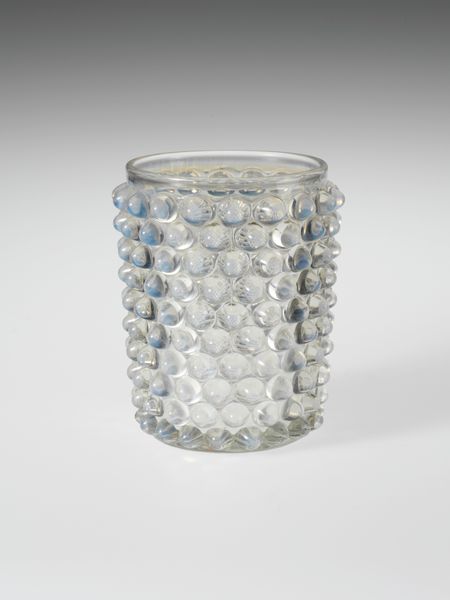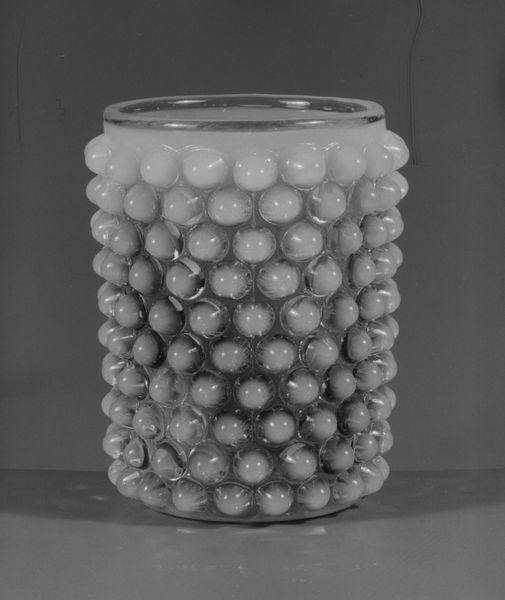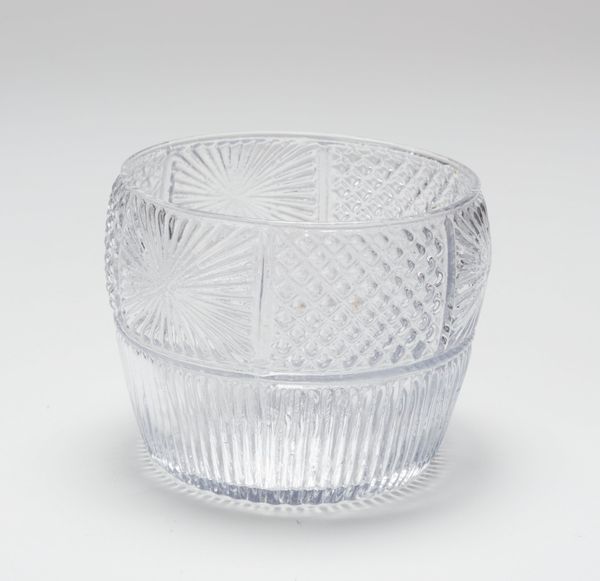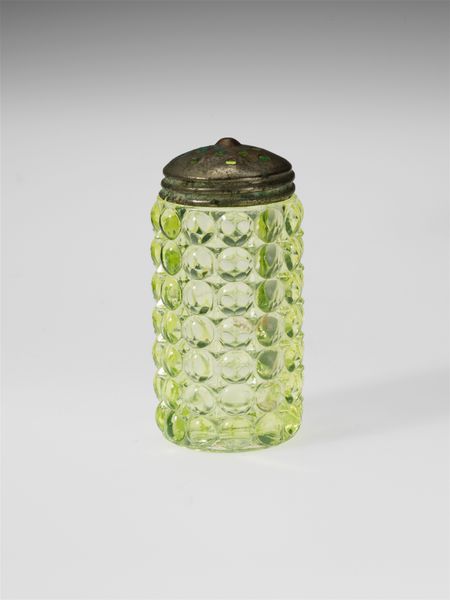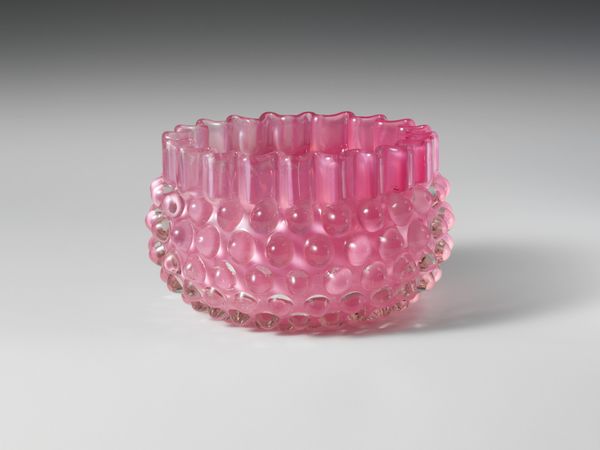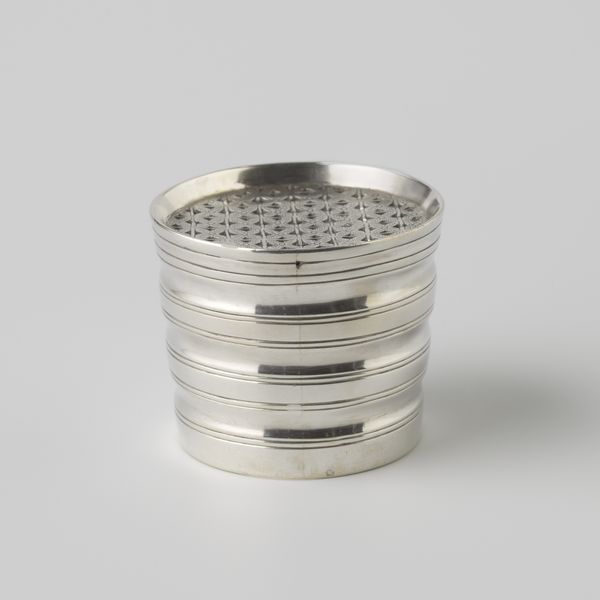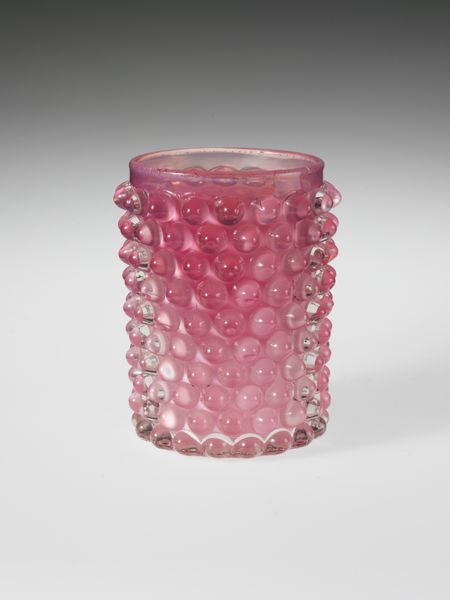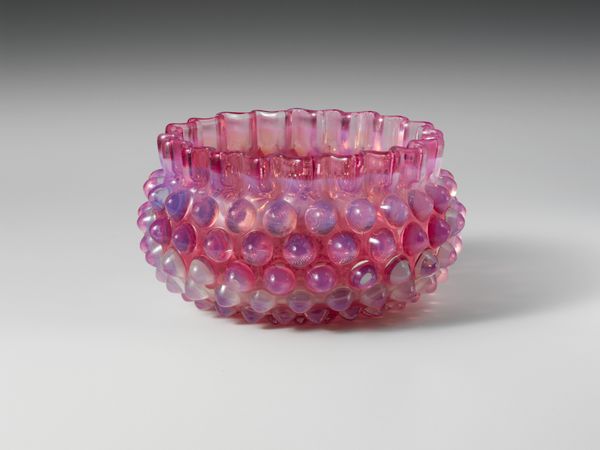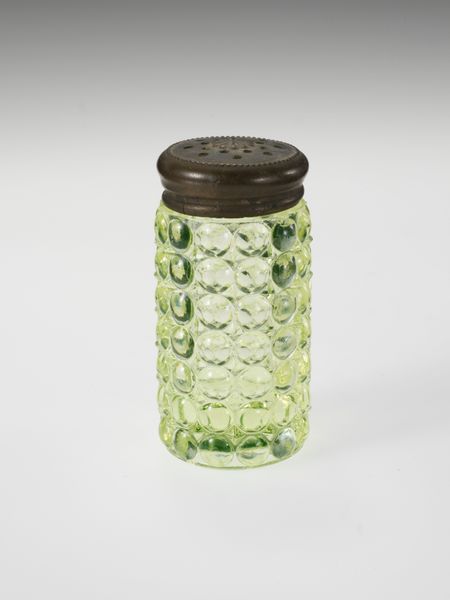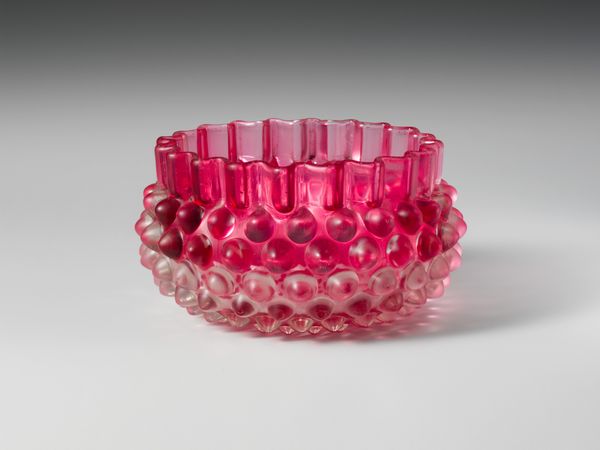
Dimensions: H. 3 3/4 in. (9.5 cm)
Copyright: Public Domain
Editor: This is “Tumbler,” made sometime between 1887 and 1896 by Hobbs, Brockunier and Company. It’s a glass object, and what strikes me most is the bubbly texture. How should we understand this piece? Curator: I see a mass-produced object masquerading as something precious. Consider the material: glass, easily molded and colored, perfect for the industrial age. But look at the surface, mimicking hand-blown glass, elevating its status beyond mere functionality. Editor: So, it's about the tension between industrial production and artistic value? Curator: Exactly. It questions the hierarchy between craft and industry. The "bubbles" themselves – are they flaws? Intentional design? It demands that we consider labor practices and who consumes such objects, and how those things affect its artistic standing. What does decorative art made through industrial labor signify in that era? Editor: It’s fascinating to think about its creation within the factory. Each bubble, though uniform, probably had some variance in the pressing. It’s no longer just a drinking vessel. Curator: Indeed. It speaks to the burgeoning consumer culture of the late 19th century, where even the most mundane items become canvases for aesthetic expression. Now, is this challenging of conventional wisdom in this Tumbler successful or an affectation of material snobbery? What is the value created and what is it actually worth? Editor: It certainly provides a lot to reflect on concerning value, production, and intent. I appreciate seeing how even a humble object contains layers of meaning. Curator: Precisely, the interplay of materiality and manufacture gives this object a story about a specific time, that allows us insight today.
Comments
No comments
Be the first to comment and join the conversation on the ultimate creative platform.
